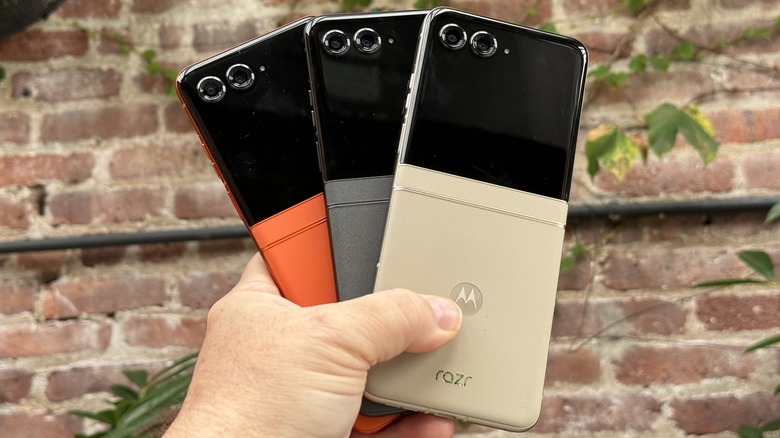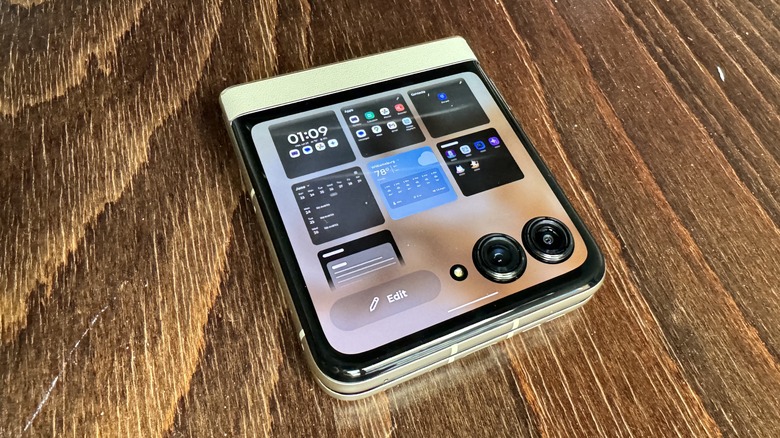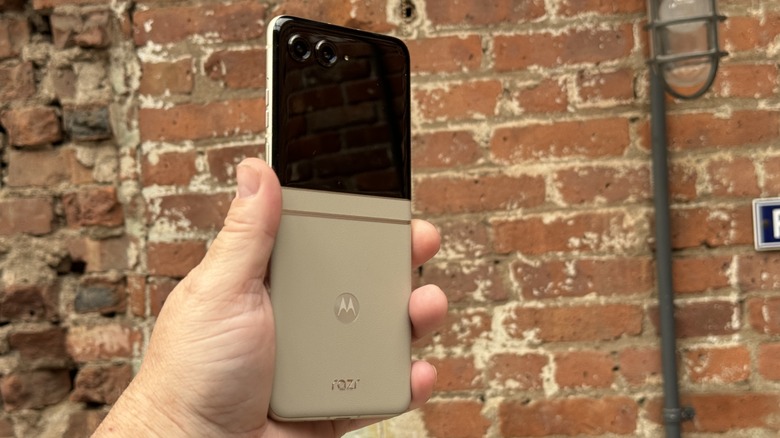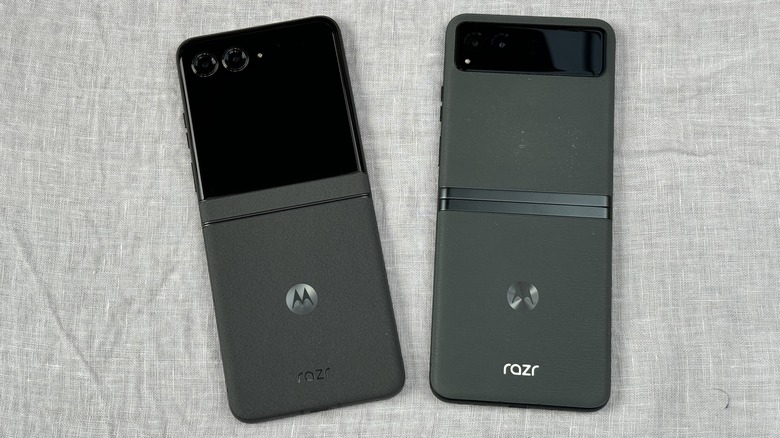Motorola Razr (2024) Hands-On: Bigger Is Better
Disclosure: The writer of this article worked independently with Motorola on pre-production units of the Moto Razr and Razr Plus. This separate SlashGear review is based on production unit hardware and is done solely at the behest of SlashGear.
Last year, Motorola launched arguably one of my favorite devices of the year. What made the Moto Razr Plus (2023) so much fun was how much you could do on the external screen, without ever opening the phone. So, when Motorola launched the Moto Razr last fall, it was a bit of a bummer. The external screen just wasn't big enough to do ... really anything. This year, Motorola is launching two new devices — and of the two, the base Moto Razr gets the biggest upgrade of the two devices. The 1.5-inch outer screen gets blown up to a 3.6-inch screen, which incidentally is the same size as the Razr+ last year. So, it's fair to say this is a huge upgrade.
That's very refreshing because last year's launch was a bit underwhelming. Notably, it came several months after the Moto Razr+. By then, even Samsung — its primary competition in the U.S. — had moved on from that tiny external display, recognizing the importance of using your phone without opening it. These days, it's very refreshing to see that Motorola, and the industry as a whole, has moved on and is taking the external display seriously — and at a great price point. Here's what Motorola is bringing to the table with the Moto Razr (2024).
The display is so much bigger
Let's keep it on that external display for a moment and talk about the new user interface that Motorola is bringing. Obviously, the whole interface is new this time around because the screen itself is new.
Like the 2024 Razr+ (and last year's model), there are panels you can swipe between for things like calendar and weather apps. Also, like the Razr+, you can run almost any app you want on the cover screen. What's new this year, is the user interface. Now, a simple pinch minimizes your view of all the panels, so you can tap to switch between them. You can also change which ones appear and rearrange them. It's far more intuitive than last year's Razr+, which required you to go into the settings to change them around.
Also, both phones this year get an always-on display, which was a much-requested feature from last year. Further, the always on display can match up with your lock screen display, so it just removes the photo and turns into black and white text, giving you a seamless transition from AOD to lock screen — it's a nice touch.
Internal upgrades
On the inside, the battery remains the same at 4,200 mAh. Motorola added a MediaTek Dimensity 7300X processor, 8GB of LPDDR4X RAM, and 256 GB of UFS 2.2 storage, along with Android 14. Motorola is also promising three years of OS upgrades along with four years of security updates. It's worth noting that, as of this writing, Motorola hasn't updated last year's Razr+ with Android 14 as of yet, but promises that'll happen this summer.
The camera is a new 50MP sensor with f/1.7 aperture and .8-micron pixel size. The camera quad bins down to 12.6 MP by default. The ultrawide camera is a 13MP shooter with 120-degree field of view.
It would be fair to say that the Razr's camera last year was, to put it politely, not very good. So, with that low bar already set, it shouldn't be hard to improve for this generation. Our full review will tell that story, but considering the Moto Razr+ doesn't have an ultrawide camera at all, that's already an upgrade for those who consider the ultrawide camera a necessity.
The new Razr has affordable potential
While it's too soon to draw any definitive conclusions, it's good to see a solid step forward from Motorola. This is especially true since the company is keeping the same $699 price point. Last year, you really had to compromise to get to that number. This year, it'll be a lot easier to walk out of the store feeling good about your $699 folding phone.
Of course, the fact that you can even buy a folding phone for less than $700 is remarkable. If the cameras can stand up to even mid-range standards, Motorola will be in good shape. The addition of the larger cover screen, always on display, and the new user interface are all wins. Meanwhile, the MediaTek processor is something of an unknown quantity, as is the camera, so that price break could (and let's be honest — probably will) come with a sacrifice. Stay tuned to our full review when we can break down what those compromises actually are.



